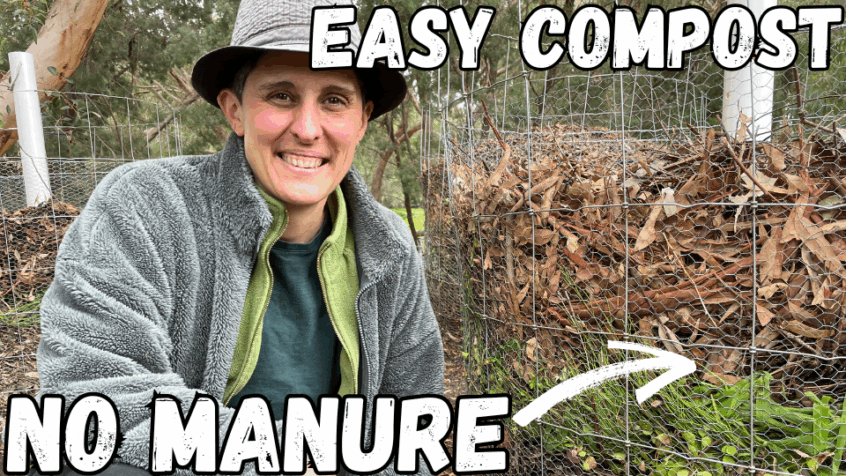Composting Secrets from WA: DIY Bins, Better Microbes, and Real Results

Just east of Perth, something exciting is brewing—well, rotting, actually.
At a native plant conservation nursery, Crystal Mathelot is taking composting to the next level. She’s using ideas from the regenerative agriculture space to supercharge seedling development, all while keeping it low-cost, practical, and downright clever.
This week on the Farm Learning YouTube channel, I visited Crystal to uncover how anyone can build a simple, budget-friendly compost system using spare fencing wire and a little know-how.
Let’s break down her easy method—and why it’s got soil scientists (and backyard gardeners) buzzing.
💡 From Fencing Offcuts to Fertile Compost
Instead of shelling out cash on store-bought plastic compost bins, Crystal’s built her own using leftover stiff-stay fencing and heavy duty mesh. The result? A 1.2m high, 1.2m diameter compost ring that’s breathable, strong, and surprisingly effective.
All you need:
- 4 metres of 81/125 stiff-stay wire
- 900mm HD mesh
- A Jamro clip gun or twitching wire
- An offcut of white pipe (more on that soon)
Watch the full build and walkthrough here:
📺 Watch on YouTube
🛠️ No Drilling, No Fuss: The Oxygen Chimney
Now here’s the clever bit. Crystal uses a simple solid white pipe stuck vertically in the centre of the pile to act as a chimney. Unlike traditional systems that drill holes in the pipe for airflow, Crystal leaves hers solid. Why?
Because after a few weeks, she removes the pipe, leaving a perfect air tunnel through the middle of the compost. It’s a natural aeration system—no turning, no stirring, and no microplastics.
🌱 Compost Like a Pro: 50/50 Greens and Browns
Crystal sticks to a classic but effective 50/50 ratio of green to brown materials, layering them like a lasagne. Kitchen scraps, green trimmings, and lawn clippings meet dry leaves, twigs, and straw in equal measure.
Once the pile’s full, it sits for 3–6 months. Then she unclips the wire ring, flips the pile, and starts again—reusing the same frame and pipe. That’s circular thinking in more ways than one.
🔬 What’s in the Pile? Let the Microscope Decide
Crystal’s not just making compost—she’s studying it. Using a microscope at home, she’s begun to compare microbial life in her piles to that of commercial and natural systems.
Early results? Fascinating similarities. Whether it’s old manure or plant scraps, the microbes seem to follow the same patterns of decomposition. But now she’s taking it further—with the help of RegenWA, she’s profiling compost biology to inform future land rehabilitation projects.
🤝 Want to Learn More (or Build One Yourself)?
Crystal will be sharing her techniques and findings in upcoming RegenWA workshops, and she’s keen to connect with growers, gardeners, and curious minds.
👉 Visit RegenWA to get involved
📺 Watch the full YouTube episode
Whether you’re a backyard veg grower or a landcare volunteer, Crystal’s system is a practical, affordable way to build biology into your soil—and make use of those leftover fencing scraps while you’re at it.
👇 Like This? Do This:
- Share this video with someone who needs better compost.
- Subscribe to the Farm Learning Channel for more regenerative tips and tools.
- Thumbs up the video to help more folks discover clever ideas like this.
- Follow RegenWA for workshops, updates, and local knowledge: www.regenwa.com
Till next time,
—Tim